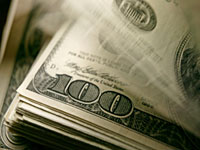
 The highest marginal income tax rate has been too low relative to the nation’s history since 2004, according to technical analysis applied to tax data by John Roque of WJB Capital.
The highest marginal income tax rate has been too low relative to the nation’s history since 2004, according to technical analysis applied to tax data by John Roque of WJB Capital.Roque, who practices unemotional chart analysis by using mathematical models on securities prices, shows that the highest income tax rate is one standard deviation below the mean rate and therefore like any measurable quantity he studies in the past, due for a relative return to the mean.
“Democrats and Republicans can continue to duke it out in the halls of Congress, but you can be fairly confident that the highest marginal income tax rate is going up,” said Roque, who makes buying and selling decisions based on his chart analysis, in a note to clients. “It’s just a question of how much.”
The average rate for the highest group of earnings since 1913 is 59 percent. While Roque doesn’t necessarily believe they are going back that high, his analysis was proven correct in the late 1980s, when tax rates fell through that one standard deviation level to below 30 percent. It then snapped back to as much as 40 percent in the mid-90s.
“You’ll notice rather quickly that the current highest marginal income tax rate is equal to the -1 standard deviation reading,” added Roque. “Put another way, it’s at the bottom of the range.”
This may be disappointing to Republicans hoping for a debt ceiling deal that doesn’t include tax increases, or even better includes tax cuts for the wealthy or so-called job creators.
“Most studies agree that an effective plan should focus more on spending cuts than on tax increases,” wrote Ethan Harris, North America economist for Bank of America Merrill Lynch, in a note. “In our view, the plan should be comprised of at least two-thirds spending cuts.”
For the best market insight, catch ‘Fast Money’ each night at 5pm ET and the ‘Halftime Report’ each afternoon at 12:30 ET on CNBC.

Be the first to comment